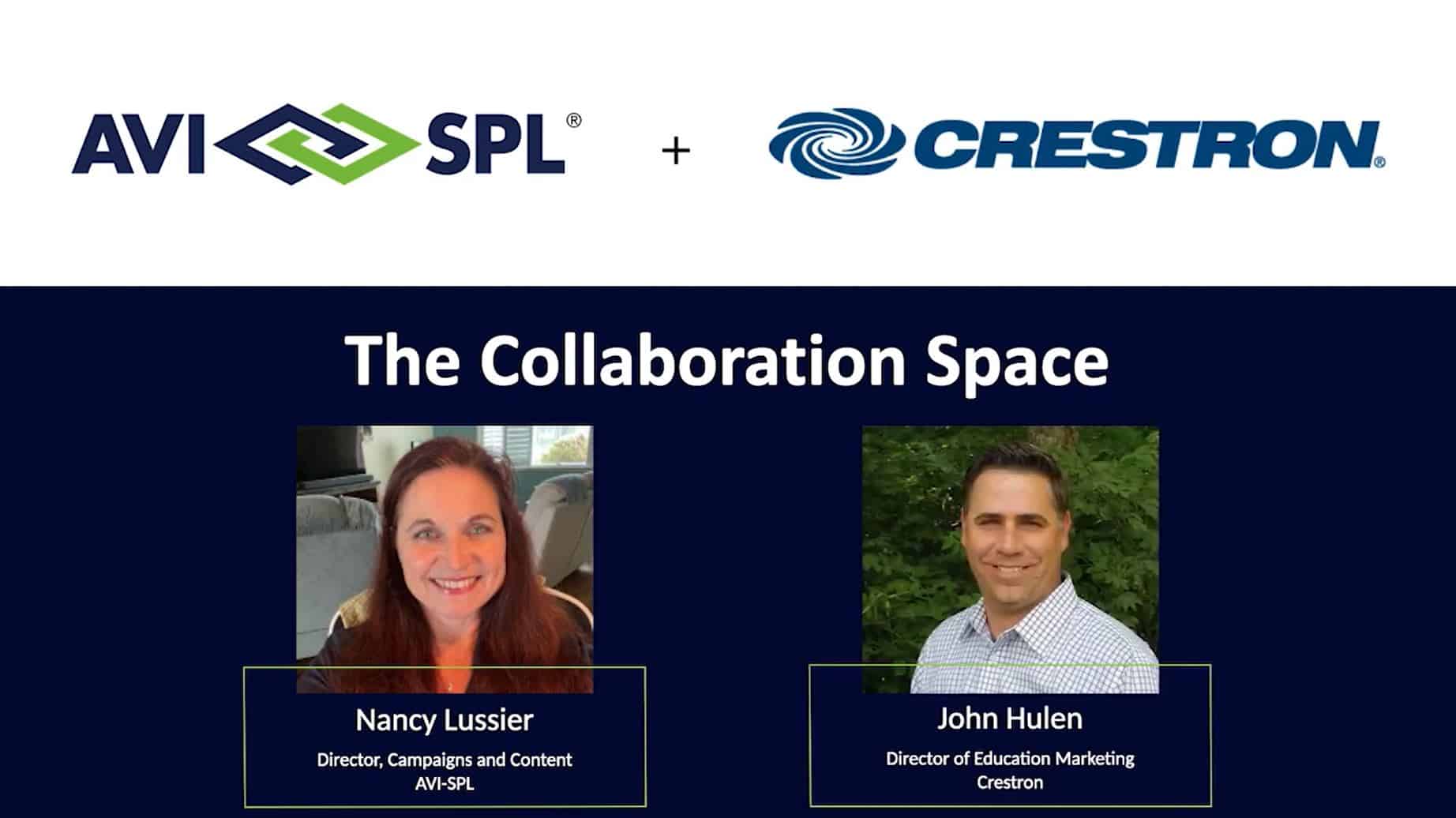What’s trending in audiovisual technology for higher education? There are several trends to follow in hybrid and active learning, as well as emerging trends in areas like simulations. In this Collaboration Space podcast, John Hulen, Director of Channel Marketing for Education at Crestron Electronics, talks about the technology improving higher education in 2023.
2023 AV trends in higher education
HyFlex technologies support all types of learning
Hybrid learning is still a focus in higher ed because there are a lot of issues to fine-tune. After the rush to get classes online, schools are now taking their time to be strategic about implementing long-term hybrid and flexible classroom solutions. For example, higher ed technologists are now able to get into details like what are the best kinds of camera shots to optimize the online learning experience.
Flexible technologies are improving remote, blended, and in-class learning. They’re also allowing more instructors to teach remotely or out in the field. Flexible solutions are transforming in-class learning too by supporting active learning, which improves student engagement.
For example, displays with wireless sharing can be used by both instructors and students in breakout groups. And it’s easier for flipped classrooms to perform activities or group work in class because students can view instructor recordings outside of class at their convenience.
Higher ed embraces gamification of learning
Tech-centered forms of gamification range from interactive quizzes to simulations and competitive video games. These efforts keep students engaged because they’re fun and exciting, but the technology also makes it more interesting than just tallying scores on a whiteboard.
Esports is a tech-intensive college activity that is more popular than ever, and it benefits students and schools in a variety of ways. It teaches soft skills to players and other team members, including collaboration, time management, team-building, and more. These skills help students going into almost any career. Esports labs and computers can also be used by other programs for simulations and similar activities, making the technology a popular and worthwhile investment. Colleges and universities have also found esports to be a valuable recruitment tool.
Get higher ed AV/UC insights sent to your inbox!
Futuristic tech still requires ease of use
Futuristic technologies like XR (virtual, augmented, and mixed realities) tech are increasingly being used in simulation labs. Students use equipment like VR goggles in teaching kitchens, for virtual field trips, or in other experiential learning environments.
Automation is another existing capability that is growing in use. With all the technology in today’s classrooms, faculty members don’t always have the time or desire to train to use it to its potential. Increasingly, technologists can configure equipment to automatically turn on and set preferences that are unique to each instructor. This can be done, for example, via RFID (Radio Frequency Identification). Instructors don’t even have to worry about turning equipment off or taking down shared content, as the technology knows when the instructor plugs in or unplugs their computer.
Keeping up with higher ed tech trends
Ed tech is continuously improving, making it a challenge to keep up with which technologies are must-haves. AVI-SPL and Crestron help higher ed technologists choose, integrate, and efficiently manage solutions. If you want info on any of these trends, get in touch with AVI-SPL today.


